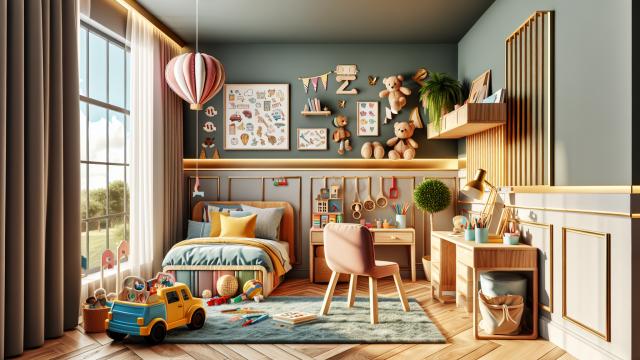
Designing a bedroom for your little ones can be a delightful yet challenging task. As a parent, you want to create a space that not only reflects your child's personality but also promotes growth, learning, and play. With these 'kids bedroom tips,' you'll be equipped to transform a simple room into a magical, functional haven your kids will love.
The first tip is to consider the theme of the room. Are your kids fascinated with outer space, enchanted by fairy tales, or maybe they're budding naturalists? The theme can inspire wall colors, furniture designs, and accessories. It's essential, however, to remember flexibility; children's interests can change rapidly. Opt for elements that can easily be updated or swapped out as your child grows and their preferences evolve.
Next, think about incorporating educational elements. A world map or an alphabet chart can double as decor while also being learning tools. Storage solutions, such as bookshelves and toy bins, can teach organization skills. And by including books and educational toys, you can foster a love for reading and exploration, making the bedroom not just a place for sleep, but for learning as well.
Storage is a third crucial aspect. Kids accumulate lots of stuff, from toys and games to clothes and art supplies. Innovative storage solutions such as under-bed containers, closet organizers, and multi-functional furniture can keep the room tidy while also teaching your child the importance of organization. The right storage can make room cleanup simpler and more efficient.
Safety is a non-negotiable fourth consideration. Furniture should be sturdy and anchored if necessary, electrical outlets should be covered, and windows should have child-safe locks. Soft rugs, rounded furniture corners, and non-toxic paint are just a few considerations that can make all the difference in ensuring your child's room is as safe as it is charming.
The fifth tip involves creating distinct zones. A reading nook with comfortable seating can encourage quiet time with a favorite book. A small desk or a craft table can provide a dedicated space for homework and artistic endeavors, and an open area for floor play is essential for imaginative play and building projects. Each zone can help kids switch between activities and better organize their play.
Lighting is our sixth tip and an often-overlooked element that can dramatically affect the mood of a room. Soft, warm lights can create a peaceful atmosphere for bedtime, while brighter lights in the study area can keep your child alert while reading or writing. Nightlights can also offer comfort for those who aren't quite fond of the dark and ensure safety for late-night bathroom trips.
Last but not least, involve your kids in the decorating process. This tip could be the most rewarding. Their input on color choices, bedding, and decorations will not only personalize the space but also give them a sense of ownership and pride in their room. Their bedroom should be a reflection of who they are, and involving them in the process can be an empowering and fun experience.
With these kids bedroom tips in mind, you'll be well on your way to creating a space that is both fun and practical, a perfect haven for your little ones to grow, rest, and play.
